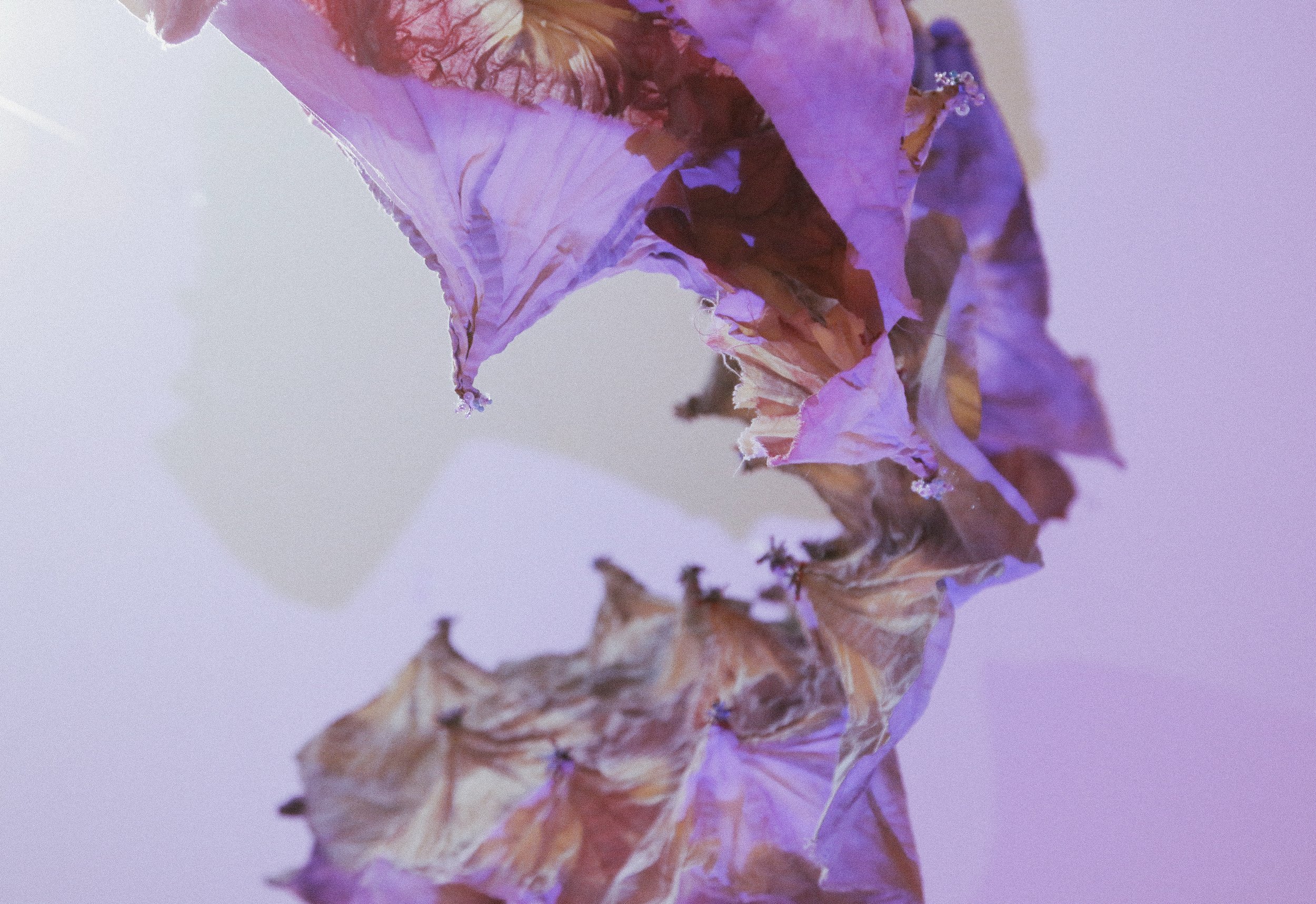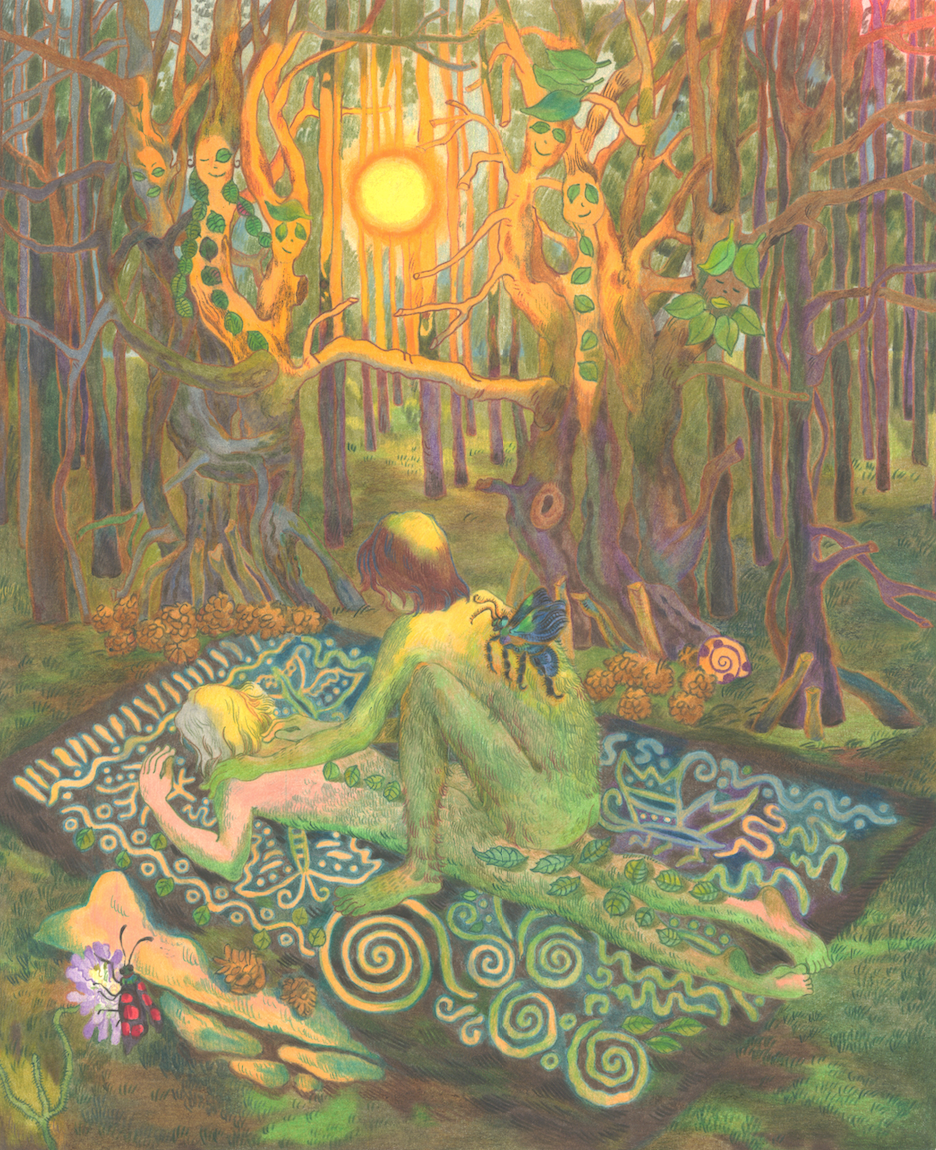10 Questions with Shiqing Li
Shiqing Li (李诗卿) (b.1995) is a Chinese artist based in New York City and California.
She received a BFA degree from the Academy of Art University in San Francisco (2020) and an MFA Degree from the Parsons School of Design (2023). She is currently residing in New York and working as a part-time fashion artist and textile designer. Her artworks have been exhibited in various locations, including New York, Beijing, San Francisco, Los Angeles, Palm Springs, London, and Athens. Shiqing makes felting, stitching, dyeing, drawing, beading, embroidery, biomaterials, and installations.
Shiqing Li - Portrait
ARTIST STATEMENT
“I am Shiqing Li, a Chinese artist living in New York City. As a textile artist, I make textile art with a positive attitude to express what others define as "negative" psychological issues. I want to communicate with those who suffer from psychological issues through textiles. In creating my work, I use traditional techniques and materials while pushing the boundaries of the medium through experimentation and innovation.
My work is colorful to express my positive attitude towards psycho-social issues. My work involves hand and sewing, beading, wool felting, dyeing, and printing. Technically seeking to create multi-dimensional surfaces with comfortable textures. I invite all into my textile world.”
— Shiqing Li
© Shiqing Li
INTERVIEW
First of all, introduce yourself to our readers. Who are you, and how would you describe yourself as an artist?
My name is Shiqing Li, and I am a Chinese artist currently residing between New York City and California. I hold a Bachelor of Fine Arts degree from the Academy of Art University in San Francisco, followed by a Master's degree from Parsons School of Design. As an ENFP, my MBTI personality type, I am characterized by being enthusiastic, creative, and sociable. This means I am brimming with imaginative ideas that significantly influence my work. I strive to convey positive messages through my art, even when some of my pieces appear bloody or sharp. They are intended to express an uplifting attitude or encourage people to embrace imperfections. Thus, I consider myself an artist who communicates positivity through my creations.
You studied at the Academy of Art University in San Francisco before earning your MFA at Parsons School of Design. What did you learn from these experiences?
The Academy of Art University (AAU) is located in my favorite city, San Francisco. At this school, I learned a lot of technical skills and fundamental theories that have supported my creative endeavors ever since. I believe the technical education provided by AAU is incredibly important. During my time at Parsons, I focused more on creation and practice, learning to approach problems from an independent perspective. The MFA program offered a great opportunity to experiment with any style I wanted to explore as a student. This freedom in creation and experimentation is invaluable, as it allows one to find their unique artistic style more quickly after graduation when they step into the world as an independent artist.
© Shiqing Li
And how does living and working in both New York City and California influence your art?
My primary base is in New York, but I frequently participate in art exhibitions and art fairs in California. I love California's atmosphere—the sunshine, beaches, and serene yet vibrant city life inspire me greatly. Being in California makes me feel more emotionally stable, which fuels my creativity. New York, on the other hand, is a fast-paced city where art can sometimes feel like an unattainable, highbrow concept, while at other times, it seems to be everywhere, from street corners to the dimly lit, crowded subway cars. This contrast is part of New York's charm. Nonetheless, I find myself more drawn to the freedom that California offers.
What inspired you to become a textile artist, and what drew you to techniques like felting, stitching, dyeing, and embroidery?
I began my academic journey in Fashion Design, but a pivotal moment came when our instructors had us create fabric samples. This process sparked a deep passion for fabric development within me. I vividly recall my first design piece, where I used clothing to symbolize wounds and healing, employing beading, embroidery, and stitching to mimic the appearance of wounds. The fulfillment I found in creating fabric samples far surpassed that of designing garments and silhouettes. Consequently, I switched my major to textiles, which allowed me to continue exploring and perfecting my favorite techniques.
Your work addresses psychological issues through textile art. Can you explain how you use your art to communicate with those experiencing these issues?
One of my creations, "If I Were a Hedgehog," showcases an intricate blend of beading, felting, and stitching techniques to form numerous spikes. These spikes, although visually sharp, are surprisingly soft to the touch, inviting interaction and even hugs. Through this piece, I aimed to convey the importance of embracing our own "spikes" and disregarding others' judgments. Everyone has their unique spikes, and these traits make us special. An intriguing aspect of this piece is its kinetic nature; each spike is designed to sway, adding a dynamic element to the installation. At the art fair, the piece evoked diverse interpretations: some perceived it as a monster, others saw it as a message for ocean conservation due to its blue and coral hues, and some viewed it as support for the LGBT community. Every interpretation is valid, and the work is open to myriad understandings. This diversity in perception is incredibly fulfilling, as "If I Were a Hedgehog" has left a deep impression on many, resonating with audiences and media alike and bringing different forms of comfort to people.
© Shiqing Li
© Shiqing Li
Can you describe your creative process when starting a new textile piece?
I start by reflecting on my recent experiences and future aspirations. This introspective phase is followed by research and initial discussions about the piece with others. I believe that communication is crucial for gathering a wealth of ideas; a closed environment cannot produce great art. Once I have a concept, I focus on determining the colors and textures. I often find inspiration during the creation process itself. This approach keeps the process fresh and exciting, with new ideas emerging every moment.
How do you blend traditional textile techniques with innovative approaches in your work?
Some traditional techniques fall short of conveying the precise emotions I aim to express, so I experiment with various materials. For example, traditional fibers like wool and cotton are too soft to achieve a hard, smooth texture. In such cases, I might use candles or fish glue to create the desired effect. During the initial stages of my creative process, my focus isn't on developing new products. While this might not seem ambitious, my priority is finding materials that suit the piece, convey the intended effect and texture, and serve the artwork. Concerns like sustainability or waterproofing come later; what's most important to me is whether the material can fulfill my vision for the work.
What themes or messages do you hope viewers take away from your textile installations?
I never believe that only beautiful or pretty works are good works. Sometimes, "ugly" and "imperfect" pieces can alsobring comfort because perfection can feel too distant. Through my work, I aim to convey a sense of "warmth" or "groundedness." Art comes from life, expressing emotions like joy and sorrow through a different medium. It shouldn't be elevated above everyday life. Rather than creating works for "insiders" to discuss, I want my art to resonate with the everyday experiences of ordinary people.
My piece "If I Were a Hedgehog" is inspired by the psychological concept of the hedgehog personality. These individuals tend to avoid reality and feel fearful around strangers, often giving a strong first impression that can be unsettling. However, like a hedgehog, their inner selves are soft, tender, and lovable, longing to be touched and understood. In reality, everyone has their own "spikes." Just like a rose has thorns because it is a rose, each person's unique spikes make them who they are.
© Shiqing Li
As a part-time fashion artist and textile designer, how do you balance your commercial work with your personalartistic projects?
In my commercial work, I respect and follow the company's ideas and attitudes. This process is also a learning experience for me, allowing me to continually absorb new knowledge. When creating my own art, the insights gained from commercial projects often inform and enhance my work. For instance, during my time at Marchesa, a world-renowned high-end womenswear brand, I was responsible for the embroidery on their couture pieces. Their exquisite techniques elevated my understanding of embroidery to new heights. As a result, when I create my own pieces, I hold myself to higher standards and expectations. This ensures that every detail, especially the beading, is executed with precision and serves my creative vision.
And lastly, what new projects or techniques are you excited to explore in the future?
In the future, I'm excited to start showcasing my unique style more prominently in my work. I am already in the process of creating a range of products that include wearable art and home decor pieces. I believe that commercializing art is a significant milestone for any artist, serving as a marker of success. By blending my artistic vision with functional items, I aim to make art more accessible and integrated into daily life. This approach not only broadens the reach of my work but also allows me to experiment with new techniques and materials, further enriching my creative journey.
Artist’s Talk
Al-Tiba9 Interviews is a promotional platform for artists to articulate their vision and engage them with our diverse readership through a published art dialogue. The artists are interviewed by Mohamed Benhadj, the founder & curator of Al-Tiba9, to highlight their artistic careers and introduce them to the international contemporary art scene across our vast network of museums, galleries, art professionals, art dealers, collectors, and art lovers across the globe.




















